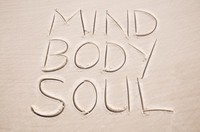The most important message regarding signs and symptoms of possible victimization is that these possible indicators may be nothing more specific than hints of high reaction to stress. There are many sources of stress in the lives of children which can range from starting a new school year; bullying from peers; looming final exams; upcoming family simchot; or illness/death in the family. Current or past abuse or neglect is only one possibility. Any individual symptom doesn't mean the child was abused, but several of them, or one which is dramatic, may mean that you should begin assessing more closely.
When reviewing these general signs and symptoms, parents and educators may want to consider the following themes as a guide for further investigation:
Am I seeing âclustersâ of symptoms;
Do the symptoms represent significant changes from the childâs past personality/behavior;
Are they more pronounced than for his/her peers? (Particularly adolescents);
Am I witnessing 1-2 of the few âhigh-riskâ signs that would need immediate attention?
Behavioral and Interpersonal Indicators
Significant changes in eating patterns.
Problematic sleep patterns:
Difficulty falling asleep or staying asleep.
Sleeping many more hours than in the past; still feeling emotionally exhausted upon waking.
Nightmares.
Fear of the dark; or intense desire for adult attention until falling asleep.
Teachers notice:
Poor concentration in class.
Play is rigid, repetitive and anxiety producing; themes of trauma in essays/pictures.
Limited focus and attention for significant periods of time.
High fluctuation in grades.
Increased requests to visit the nurseâs office; bathroom; counselor.
Relationships patterns.
Generally personable child has become more withdrawn and aloof.
Generally appropriate child becomes more aggressive towards peers.
Arguments; fights; intrusive behaviors.
Child presents as more clingy towards others.
Childâs behaviors and discussions have become less Tznius.
Intense fear of particular people and/or places.
Psychological Indicators
Depressed mood.
Anxious presentation.
Regressed behaviors; e.g. years after such behaviors had ended, a return to:
Bed-Wetting.
Thumb-Sucking.
Security Blanket.
Somatic complaints not related to medical problems:
Headaches; nausea; stomachaches; etc.
Specific to Adolescents
Sudden mood swings: rage, fear, anger, or withdrawal.
Significant highârisk behaviors.
Intense questioning regarding religious faith (particular interest in, or anger related to, Hashemâs allowing for bad things to happen.)
Experimentation with alcohol and/or other drugs.
Promiscuity and indiscriminant use of internet or other mediums for non-Tznius behaviors/interests.
Remember, the prevalence of those symptoms do not prove victimization, but rather, may lead us to consider the possibility of some occurrence of stress for the child and that further sensitive assessment may be needed.
Strong Indicators of Significant need for Intervention:
These indicators should be dealt with quickly through sensitive investigation and referral as needed.
They are also more strongly correlated to possible exposure or victimization.
Complaints of physical pain in private areas, or while using the bathroom.
New or advanced words for private body parts or for related behaviors.
Younger children in possession of explicit pictures, magazines, DVDâs or videos.
Inappropriate boundaries with others; violation of various forms of personal privacy.
Risky behaviors that may lead to self-harm (excessive experimentation with drugs; relationships; breaking the law.)
Self-cutting.
Evidence of symptoms of eating disorders.
Suicidal ideation or comments.
Unexplained and/or graphic telephone or Internet conversations, chats or e-mails; particularly as it involves older or more experienced individuals; or if there is discussion of future meetings.
Talking about a special older friend.
Sharing secrets with this individual.
Spending unexplained time with the individual
Obtaining money, favors, toys, etc. from this individual
Child discloses victimization to peer, teacher, rabbi or parent.
B. Horowitz, LCSW-R

 Previous
Previous

